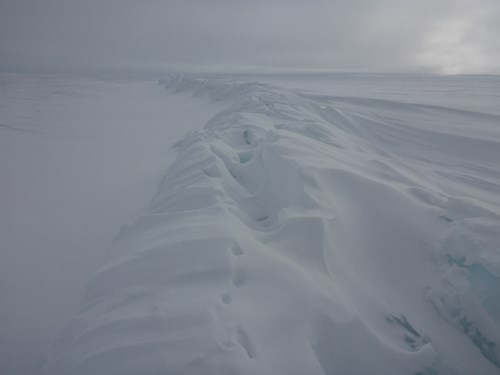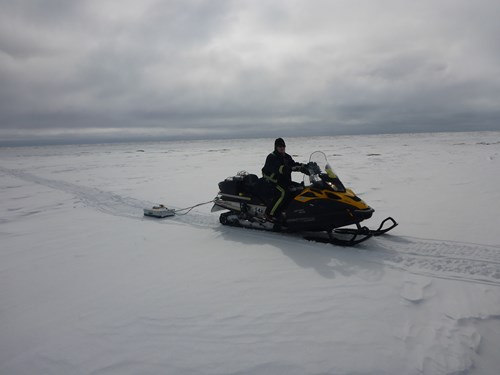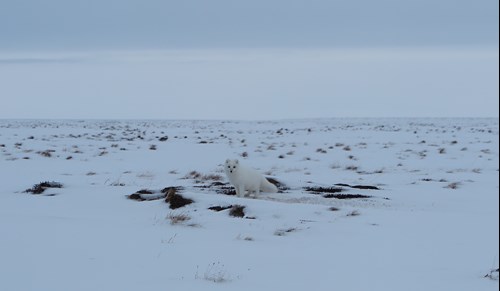- Dec 2
- Children of the Arctic
- Apr 18
- Snow, Wind, and Ice
- Apr 16
- Lesson from the Arctic
- Apr 14
- I Love Doing Science!
- Jan 28
- Bouncing Back in Whiteness
- Jan 27
- The Magical SAR Queen Rules!
- Jan 26
- Arctic Winter Science
- Jan 25
- A Day to Chill
5/1/2016
Adding to the early spring that we are experiencing on our travels, greater white-fronted geese showed up a few days ago and their honks are becoming increasingly common on the landscape. None of our team are experts in bird biology, but we are pretty sure the timing of this arrival is early. Snow buntings flit by commonly and we saw a snowy owl on a pressure ridge last night. The presence of these species now is expected.

Yesterday we worked on a set of lakes to the East of here with differing patterns of change. All were near the depth that ice grows to by this time in late winter and satellite radar measurements over the last decade suggest changes in opposing directions. Perfect lakes to look at how lakes interact with permafrost by thawing or reforming it. The UWyo Andys and UAF Allen worked on laying Nuclear Magnetic Resonance (NMR) loops to detect these conditions. The measurement takes a while and staying warm and comfortable is challenging.

Esther and I split off to do a ground-penetrating radar (GPR) transect on Island Lake on a nice depth gradient from floating ice to bedfast, which likely accentuates sublake permafrost geometry. Ben and I first worked on this transect back in 2008. We also did a late evening analysis of a pressure ridge along the North side of Teshekpuk Lake. Travel was fine, but the tundra continues to brown as the snow disappearance uncovers vegetation. Its a bit unsettling in terms of comparing this season to our previous nine.

Is this early Arctic spring just noise? Or is what we are experiencing a signal in the record of amplified response of the Arctic coastal areas to climate change? It’s hard to know until after the fact, but noisy events can create feedbacks in the system that push changes along more rapidly than predicted. The coastline at Drew Point just North of here where Ben roamed yesterday is a good example now captured in real-time. There, sea-ice decline interacts with permafrost to change the face of the land in dramatic fashion. The geese don’t seem to mind. How sensitive other Arctic organisms, including ourselves, are to this pace of change is less certain.
